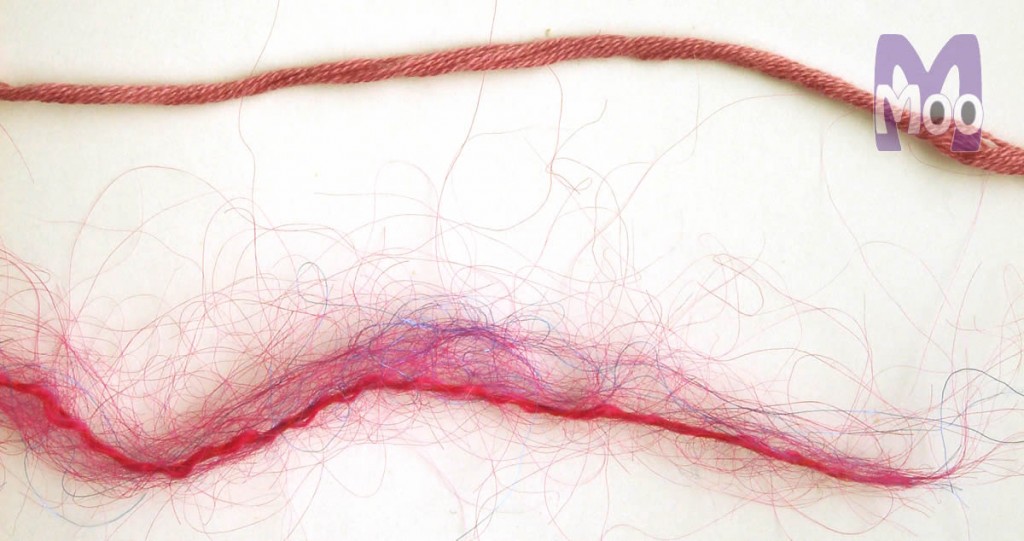Before fibers such as wool can be used in knitting or weaving, they must be turned into strong, continuous strands. Spinning is the process that turns a pile of loose fibers into yarn.
You can do this at home using either a spinning wheel or a hand spindle and some fiber that has been prepared for spinning.

Spindle Spinning
The most basic and inexpensive way to make your own yarn is by using a drop spindle. Drop spindles are simple devices made of a cylindrical shaft (around which yarn is wound after spinning) and a whorl.
The whorl is a wooden disc that gives weight to the spindle. A bottom/low whorl spindle has the whorl near the bottom of the shaft. A top/high whorl spindle has the whorl near the top of the shaft and can spin at higher speeds for a finer yarn.
Both types of drop spindles use their own weight to draw out the fibers and twist them into yarn. Spun yarn is wound onto the shaft after each drop of the spindle.
The Navajo spindle is a supported spindle. A longer and heavier version of the low whorl spindle, the Navajo spindle is not dropped, but is supported in a bowl or on the floor while the seated spinner rolls the shaft of the spindle up and down a thigh with one hand and draws fiber from the prepared wool with the other hand.
Wheel Spinning
The spinning wheel is used for greater speed and larger quantities of fiber. The spinner sits at the wheel and operates a treadle (foot pedal) to spin a wheel as the hands pull and feed prepared fiber to the wheel. It is best to watch the process in person or by video to understand the steps, as this type of spinning is much faster than using a hand spindle.
Fibers for Spinning
Wool is the fiber of choice for home spinning, as it is the easiest for beginners and is readily available. Wool top (a pile of wool that has been combed smooth) and wool roving (thick, ropelike untwisted wool) are available from specialty yarn stores and spinning suppliers. These prepared wool fibers will be easiest to spin for a beginner. If you have sheep, alpacas, or other fiber animals, you will need to learn about shearing and combing fibers to prepare them for spinning.
Why Spin?
With yarn so easily available, why spin your own? Handspun yarn is as unique as the spinner and can be custom made for a project.
For example, once wool has been spun once it is a single-ply yarn—one twisted strand. Two or more single plies can be twisted together to create two-ply or 3-ply yarn. Hand spun yarn can be dyed to suit the knitter or left undyed. The spinner controls the yarn from fiber to finish.
Give spinning a try and see if you find it relaxing and rewarding.






